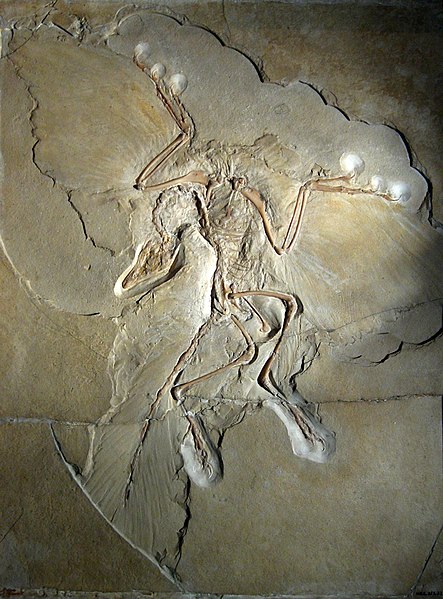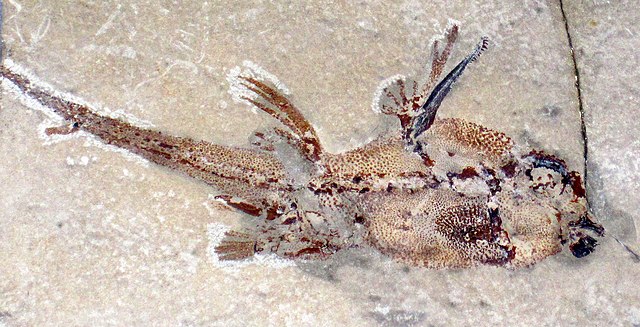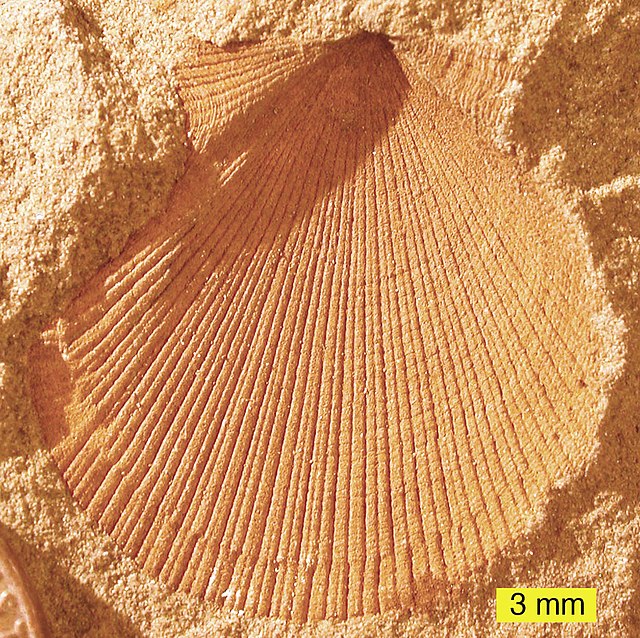A Fossil-Lagerstätte is a sedimentary deposit that exhibits extraordinary fossils with exceptional preservation—sometimes including preserved soft tissues. These formations may have resulted from carcass burial in an anoxic environment with minimal bacteria, thus delaying the decomposition of both gross and fine biological features until long after a durable impression was created in the surrounding matrix. Fossil-Lagerstätten span geological time from the Neoproterozoic era to the present.
Well-preserved basal arthropod Opabinia from Burgess Shale Lagerstätte (Middle Cambrian)
Archaeopteryx specimen from Solnhofen Lagerstätte (Upper Jurassic)
Fossil specimen of Echinochimaera from the Bear Gulch Limestone (Middle Carboniferous)
An early Stromatolite
A fossil is any preserved remains, impression, or trace of any once-living thing from a past geological age. Examples include bones, shells, exoskeletons, stone imprints of animals or microbes, objects preserved in amber, hair, petrified wood and DNA remnants. The totality of fossils is known as the fossil record.
Permineralized bryozoan from the Devonian of Wisconsin
External mold of a bivalve from the Logan Formation, Lower Carboniferous, Ohio
Silicified (replaced with silica) fossils from the Road Canyon Formation (Middle Permian of Texas)
Recrystallized scleractinian coral (aragonite to calcite) from the Jurassic of southern Israel








